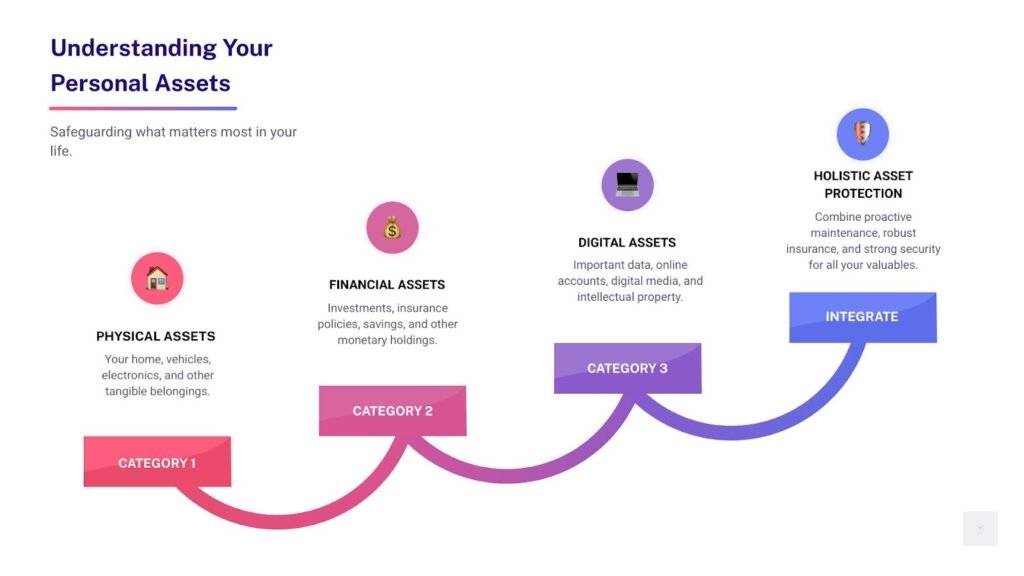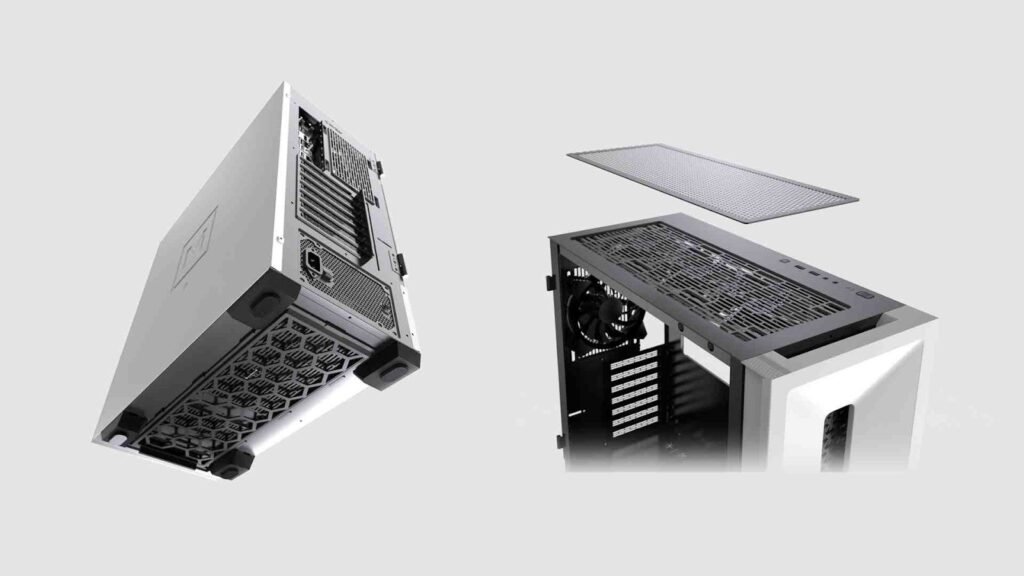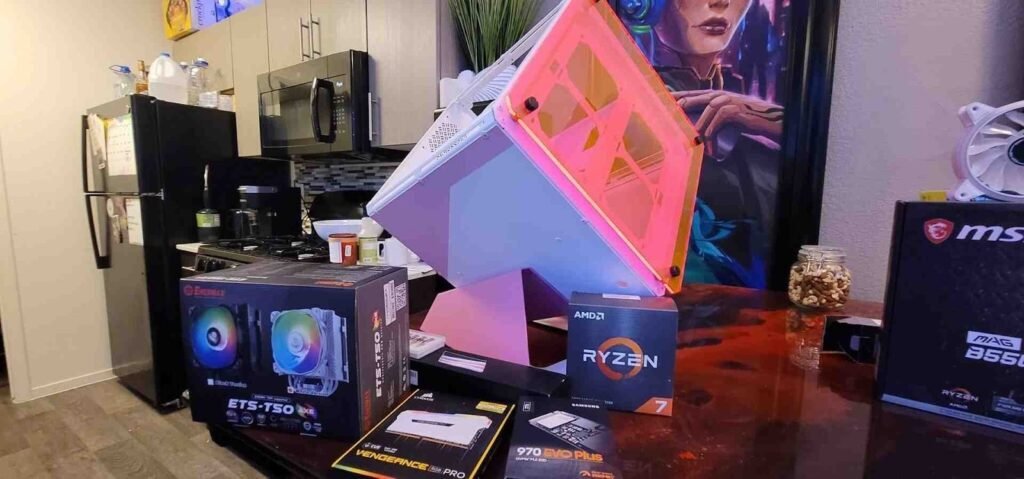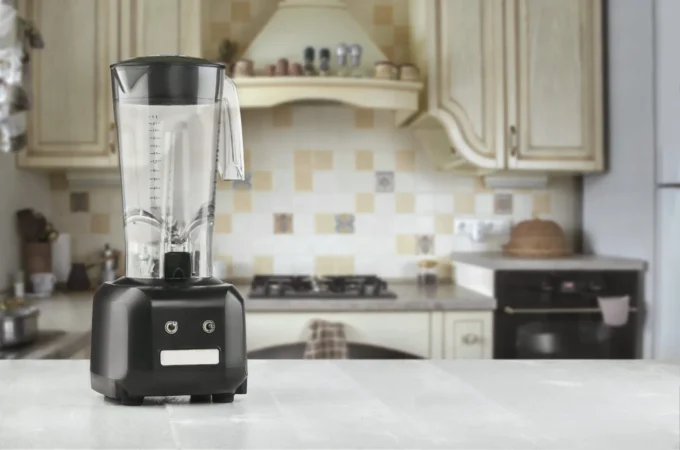
Enhancing and Protecting Your Assets: From Home Comfort to High-Tech Hobbies
Table of Contents
ToggleIntroduction: A Modern View on Valuables
Our modern lives contain many valuable assets. These include our homes, our financial security, and even our favorite hobbies. Protecting these assets is crucial. It ensures both financial stability and peace of mind.
This guide explores a full approach to safeguarding what matters most. It covers various types of assets. We will look at physical items like your home, car, and electronics. We will also discuss financial assets, such as investments and insurance. Lastly, we will touch on digital assets like data and online accounts.

High-tech hobbies are a growing part of many people’s lives. Building a custom gaming PC, for instance, is a significant investment. Keeping it safe and performing well is a key part of protecting your valuables. This article will explore how to improve and protect all your assets. This ranges from the comfort of your home to your high-performance technology.
Foundational Asset Improvement and Protection
Protecting assets goes beyond simply locking them away. It involves proactive measures to maintain their condition, ensure their functionality, and safeguard their value against unforeseen circumstances. This holistic approach applies equally to your physical surroundings, your financial standing, and your prized technological possessions. By laying a strong foundation of protection, individuals can enjoy greater security and longevity for all their valuable belongings.
Securing Your Physical Environment
The physical environment of a home plays a crucial role in protecting its contents, including valuable electronics and personal belongings. Proper home maintenance is the first line of defense, ensuring that the structure itself is sound and capable of shielding its inhabitants and their possessions from external threats. This includes routine checks of roofing, foundations, and insulation, all of which contribute to a stable internal environment.
One often-overlooked aspect of environmental protection is climate control. Maintaining optimal temperature and humidity levels within a home is vital, especially for sensitive electronics and other assets susceptible to environmental damage. High humidity can lead to corrosion of internal components in devices, while excessively dry conditions can generate static electricity, which poses a risk to delicate circuitry. Fluctuations in temperature can also stress materials, leading to premature wear and tear. A well-functioning HVAC system is therefore indispensable, not just for comfort but for asset preservation. For those seeking to ensure their home’s climate control systems are always in top condition, consulting experts in Fishers HVAC and Plumbing can provide valuable insights and services, ensuring your environment is perfectly tuned for protecting your investments.
Beyond climate, protecting electronics involves safeguarding them from physical damage, dust, and power fluctuations. Surge protectors are a simple yet effective measure against electrical spikes that can instantly destroy sensitive components. Keeping electronics clean and free from dust buildup prevents overheating and extends their lifespan. Furthermore, careful placement, away from direct sunlight, excessive heat sources, or areas prone to spills, can mitigate many common risks. Thinking about the physical space where these items reside and implementing preventative measures can significantly extend the life and functionality of electronic assets.
Creating a Financial Safety Net
Building a robust financial safety net is an essential aspect of asset protection, extending beyond physical items to encompass your overall economic well-being. This involves strategic planning and the implementation of various protective measures designed to absorb financial shocks and preserve wealth. Insurance policies form the bedrock of this safety net, offering protection against a wide array of potential losses. Homeowner’s insurance, for example, safeguards your dwelling and its contents from perils like fire, theft, and natural disasters. Beyond the home, specialized policies can cover high-value items, vehicles, and even provide liability protection.
For those who operate a home-based business, the need for comprehensive insurance becomes even more critical. Personal homeowner’s or renter’s insurance policies often have limitations regarding business-related losses or liabilities. This gap can leave entrepreneurs vulnerable to significant financial setbacks if business equipment is damaged, inventory is stolen, or a client is injured on the property. Therefore, securing specialized coverage, such as Harris business renters protection, is a prudent step. Such policies can offer custom protection for business assets, income interruption, and professional liability, ensuring that your entrepreneurial endeavors are shielded from unexpected risks.
An often-underestimated component of a financial safety net is a meticulous asset inventory. Documenting all valuable possessions, complete with serial numbers, purchase dates, and photographs, serves multiple purposes. In the event of a claim, this detailed record significantly streamlines the insurance process, helping to ensure accurate and timely compensation. Beyond insurance, an inventory aids in estate planning, wealth management, and simply understanding the full scope of one’s assets. Regular updates to this inventory are crucial, especially as new assets are acquired or existing ones are upgraded. This proactive approach to documentation reinforces the entire financial safety net, providing clarity and preparedness for any eventuality.
The Core of Asset Improvement and Protection
At the heart of effective asset management lies a philosophy of proactive maintenance and diligent risk management. This approach ensures that assets not only endure but also retain or even appreciate in long-term value. Proactive maintenance involves regularly inspecting, cleaning, and servicing items before problems arise. For a home, this means routine checks on plumbing, electrical systems, and structural integrity. For vehicles, it’s about adhering to service schedules and addressing minor issues before they escalate. This foresight prevents costly repairs, extends lifespan, and maintains peak performance.
Risk management, on the other hand, is about identifying potential threats to your assets and implementing strategies to mitigate them. This could involve installing security systems for your home, diversifying investments to reduce financial exposure, or backing up digital data to protect against loss. Understanding the specific risks associated with each asset category allows for targeted and efficient protective measures. The goal is to minimize vulnerability and maximize resilience.
The combination of proactive maintenance and astute risk management culminates in invaluable peace of mind. Knowing that your assets are well-cared for and protected against common eventualities frees you from constant worry, allowing you to fully enjoy your possessions and focus on other aspects of life. This holistic strategy transforms asset protection from a reactive chore into an empowering and continuous process of improvement and safeguarding.
Here are essential steps for creating a home asset inventory:
- Categorize Your Possessions: Group items by type (e.g., electronics, jewelry, furniture, art).
- Document Key Details: For each item, record the brand, model, serial number, and purchase date.
- Capture Visual Evidence: Take clear photographs and, if possible, video recordings of each item.
- Note Purchase Value: Keep receipts or estimates of value for insurance purposes.
- Store Securely: Keep your inventory in a safe place, both physically (e.g., fireproof safe) and digitally (e.g., cloud storage, external hard drive).
- Update Regularly: Review and update your inventory at least once a year, or whenever you acquire significant new assets.
Protecting High-Tech Hobbies: The High-Performance PC
For enthusiasts and professionals alike, a high-performance PC is often more than just a tool; it’s a significant investment and a centerpiece of a high-tech hobby. Protecting this investment means understanding the intricate relationship between its components and the environment they operate in. The physical enclosure, often an ATX computer case, serves as the primary guardian of these delicate and powerful parts. Beyond mere aesthetics, the case plays a critical role in cooling, dust management, and overall component safety, directly impacting the longevity and performance of the entire system.
The First Line of Defense for Your Custom Build Gaming PC
When investing in a custom-built gaming PC, the choice of an ATX computer case is far more critical than many first-time builders realize. Far from being just a metal box, the case is the first and most crucial line of defense for all the expensive components housed within. Its primary function is to protect the delicate internal hardware—the CPU, GPU, motherboard, RAM, and storage drives—from physical damage, dust, and environmental factors. A sturdy case prevents accidental bumps or drops from becoming catastrophic events, and its panels shield components from curious hands or pets.
Beyond physical protection, the design of an ATX case profoundly impacts the system’s thermal performance. Effective airflow is paramount for a high-performance PC, especially one used for demanding tasks like gaming or content creation, which generate significant heat. A well-designed case will feature strategically placed vents, fan mounts, and sometimes even mesh front panels to facilitate the unimpeded flow of cool air into the system and hot air out. Cases with restricted airflow, often characterized by solid front panels or cramped interiors, can lead to component overheating, which in turn can cause performance throttling, system instability, and ultimately, a reduced lifespan for your hardware. Understanding the importance of this vital component is key to preserving your investment, and for a deeper dive into how a quality case protects your PC, exploring resources like Syber ATX PC protection can provide valuable insights.
Dust filtration is another essential protective feature integrated into many modern ATX cases. Dust is a silent killer of electronics; it accumulates on heatsinks and fans, impeding their ability to dissipate heat, and can even become conductive, leading to short circuits. Quality cases incorporate removable dust filters on intake vents, which can be easily cleaned, preventing the vast majority of airborne particles from entering the system. This simple feature drastically reduces the frequency of internal cleaning required and extends the operational efficiency of cooling components. By prioritizing a case with robust construction, excellent airflow characteristics, and effective dust filtration, builders establish a solid foundation for component safety and the long-term health of their custom PC.

Optimizing Your AI Gaming PC for Longevity
For an AI gaming PC, or any high-performance desktop system, longevity and sustained performance are directly tied to effective cooling and meticulous organization. Even the most powerful components will degrade prematurely if consistently subjected to high temperatures. This is where advanced cooling solutions and thoughtful system optimization come into play, changing a collection of parts into a resilient, high-performing machine.
Modern high-performance PCs often benefit from sophisticated cooling strategies. While traditional air coolers remain highly effective, many enthusiasts opt for liquid cooling solutions, such as All-in-One (AIO) liquid coolers or custom water loops. These systems excel at moving heat away from critical components like the CPU and GPU, often allowing for lower operating temperatures and greater overclocking potential. The ATX computer case plays a crucial role here, needing to support various radiator sizes (e.g., 240mm, 360mm) and fan configurations to maximize the efficiency of these cooling setups. The placement and orientation of fans—determining whether they act as intake, exhaust, or static pressure optimized for radiators—are equally important in establishing an optimal airflow path within the case.
Beyond the hardware, careful cable management is a cornerstone of PC longevity. While often seen as an aesthetic concern, well-managed cables significantly contribute to better airflow. Cluttered cables can obstruct the path of air, creating hot spots and reducing the efficiency of fans. Modern ATX cases frequently include features designed to aid cable management, such as routing channels, tie-down points, and ample space behind the motherboard tray. By organizing cables neatly, builders ensure that air can flow freely across all components, maintaining optimal component temperatures and contributing to a cleaner, more professional-looking build. This attention to detail not only improves the visual appeal but also directly impacts the thermal performance and, consequently, the lifespan of a high-performance desktop PC.

Future-Proofing and Asset Improvement and Protection
The landscape of PC hardware evolves rapidly, making future-proofing a key consideration for anyone investing in a high-performance system. The choice of an ATX computer case is integral to this strategy, as it dictates the potential for future upgrades and the overall modularity of the build. A well-chosen case isn’t just for today’s components; it’s an investment in tomorrow’s technology.
Modularity in an ATX case refers to its adaptability to accommodate new hardware without requiring a complete system overhaul. This includes support for various motherboard form factors, ample drive bays for expanding storage, and, crucially, sufficient space for larger, more powerful graphics cards. GPU clearance, for instance, is a critical specification. As graphics cards continue to grow in size and power, a case with generous GPU clearance ensures that future upgrades won’t be hampered by spatial limitations. Similarly, support for larger CPU coolers, whether air or liquid-based, guarantees that the system can handle more powerful processors down the line. For those looking to understand the nuances of case compatibility, delving into resources that clarify Case Confusion: What Does ATX Even Mean? can be particularly helpful.
The design of an ATX case also plays a role in enhancing its long-term value. Features like tool-less entry, removable drive cages, and modular fan brackets simplify the upgrade process, making it less daunting for the user. Cases that offer flexible mounting options for radiators and fans allow builders to adapt their cooling strategy as component power demands increase. This adaptability means that instead of replacing the entire system, users can selectively upgrade components, extending the life and relevance of their initial investment. For examples of how thoughtful design can lead to an elite machine, exploring insights into A Redesign to an Elite Machine: Syber M Series showcases the benefits of forward-thinking case engineering.
By selecting an ATX case with an eye towards modularity, generous clearances, and user-friendly features, individuals can build a high-performance gaming PC that is not only powerful today but also ready to evolve with future technological advancements. This approach to component compatibility and upgrade paths ensures that the PC remains a valuable and high-performing asset for years to come, truly embodying the principle of asset improvement and protection in the high-tech hobby space.






